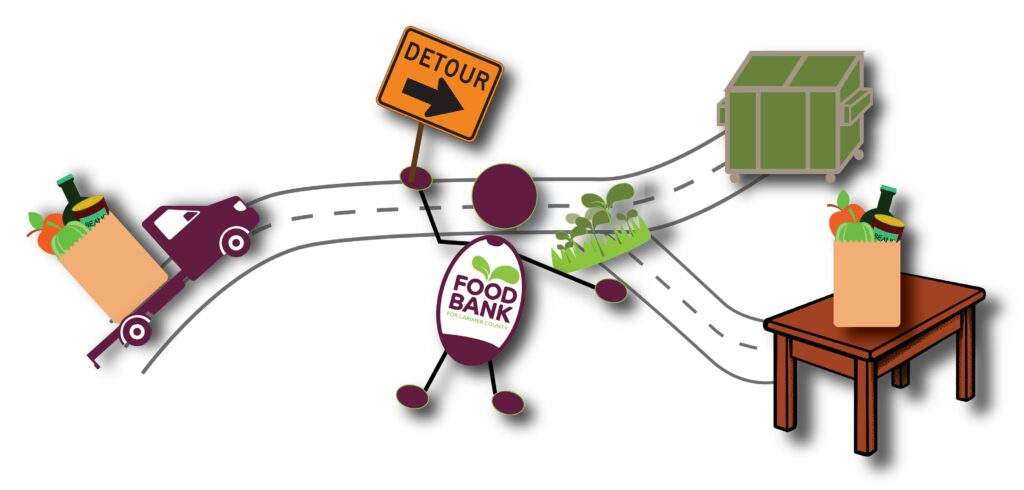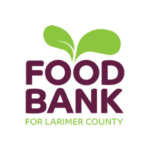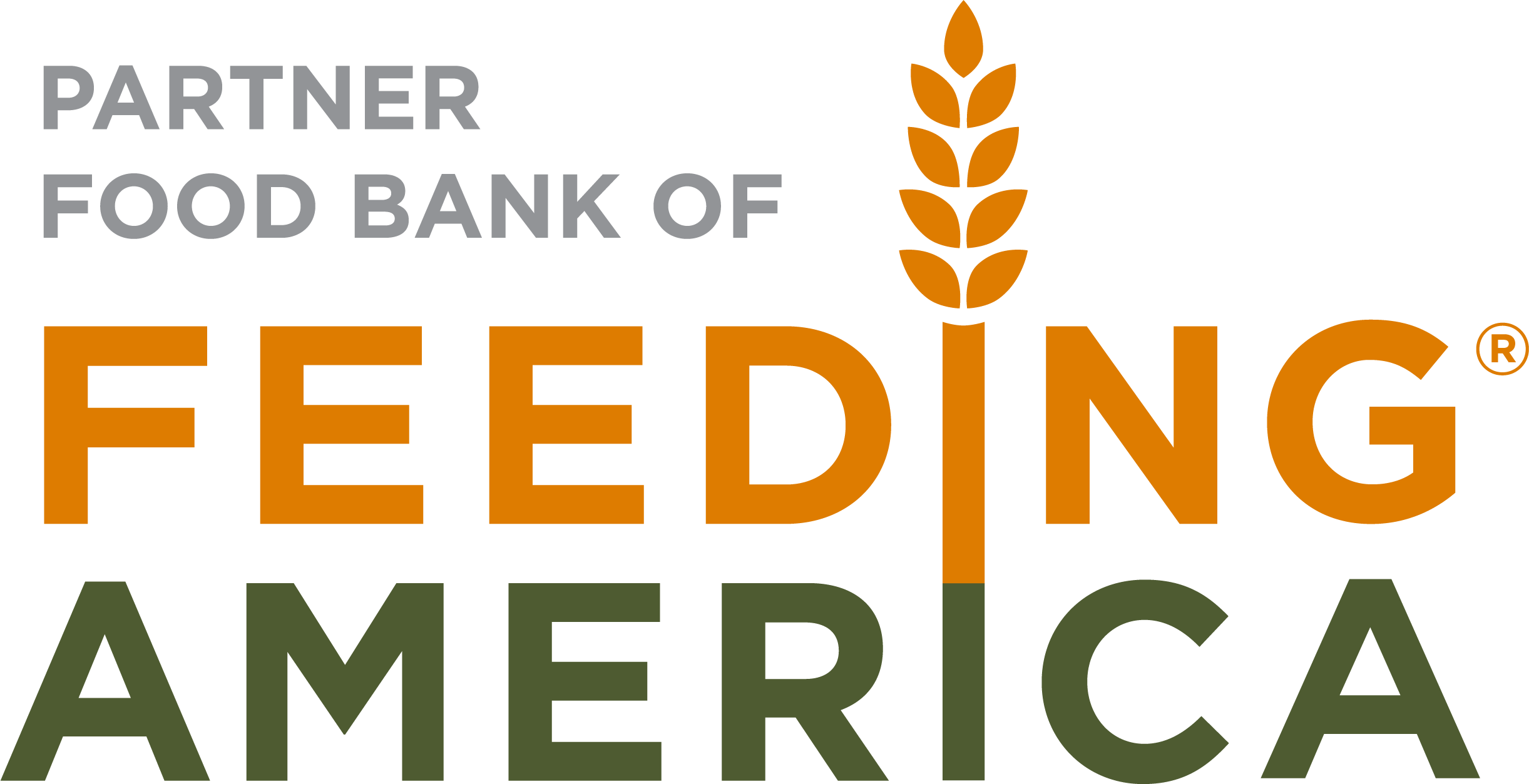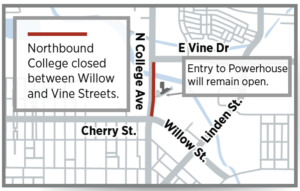Food rescue, also called food recovery, food salvage, or surplus food redistribution, is the practice of acquiring quality, edible food that would otherwise go to waste. Rescued food comes from places such as farms, produce markets, grocery stores, restaurants, or other retailers.
While most organizations that rescue food use terminology such as “diverted from the landfill” or “rescued from the landfill,” rescued food NEVER ACTUALLY comes from the landfill, a dumpster, or anything similar.
Think of a food rescuing organization as a detour sign, directing traffic a different, safer, or better way. Food banks are that detour sign for food. Useable, quality food is headed toward being wasted and/or thrown out, but we divert it through a new route that puts it into the hands of people who need it.

The most obvious benefit of food rescue is the result of offering healthy food to those who need it. While there are some differences in food rescue organizations’ structures, there are operation and structure differences. These differences include rules they need to follow, the way they run and report finances, whom they serve. Still, the universal commonality among them all is their commitment to feed those experiencing food insecurity.
Rescued food is healthy and edible… but it’s no longer sellable for a myriad of common reasons.
Below are some of the most common reasons food is rescued:
- Fresh fruits and vegetables that do not meet cosmetic standards for shape and color. In other words, it’s imperfect in appearance.
- Products get past their “sell by” or “best by” dates… which is NOT AT ALL the same as being expired or related to food safety.
- Grocers and food retailers may have made or ordered too much or a product to begin with.
- A corporation has a strict policy that no item can be on a shelf for sale for a certain number of days, regardless of product type, sell-by date, etc.
- Farmers – local AND corporate – end up with extra or leftover crops they are unable to sell, whether that sale was meant to be to McDonalds or at a local farmers’ market.
How the Food Bank for Larimer County Rescues Food
The above examples of common reasons food is unsellable all have in common that the food is quality and edible. However, some of the reasons also mean the food item has fewer days of “life” before it can be safely consumed. Because we realize the importance of this concept, we have developed highly sophisticated systems to move those items at lightning speed from its place of origin and into the hands of our clients.
The Food Bank for Larimer County – and any food bank for that matter – operates on a highly-detailed transportation and logistics management schedule and process to move products quickly and safely.
Here is what a typical day rescuing food looks like at the Food Bank for Larimer County:
6:00 a.m. | Five drivers start their workdays at one of our three locations.
- Box trucks are used on food rescue and supply routes throughout Fort Collins and Loveland Monday through Friday.
- Each day, food rescue drivers visit over 30 grocery stores and make multiple deliveries to our no-cost markets and agency partners.
7:30 a.m. | Driver 1 returns to the main warehouse after rescuing food from Sam’s Club and Super Target.
- Driver 1 unloads and weighs donations on a floor scale using an electric pallet jack.
- Produce is immediately taken to the Nourishing Network area of the cooler for our agency partners to pick out what they need for clients at their pantries and shelters.
- Warehouse staff determines bananas on his truck must be distributed to clients as soon as possible and adjusts the planned deliveries to our no-cost markets accordingly.
- Driver 1 loads the bananas back on his truck, loads the rest of the planned delivery for our Fort Collins Fresh Food Share and heads out to drive there.
- On the way there, he stops to rescue food from Trader Joe’s, King Soopers, and Walmart.
8:30 a.m. | Food Bank Warehouse staff begin unloading a truckload of mangoes, check temperatures and quality, and storing them in the correct warehouse location.
- Some of the mangoes don’t have much shelf-life left, so it’s decided to send some out the same day.
- Planned deliveries are adjusted again using an app for communication so drivers know what to load and Fresh Food Share staff know to expect bananas and mangoes that need to move quickly.
9:00 a.m. | Driver 2 loads their delivery for Loveland Fresh Food Share and drives over.
9:30 a.m. | Driver 1 and Driver 2 arrive at each Fresh Food Share location and make their deliveries.
- Driver 1 heads back to our distribution center (main warehouse in Loveland) to load the truck for another delivery.
- Driver 2 continues on their route to pick up donations from Noosa and Morning Fresh Dairy.
10:00 a.m. | Both Fresh Food Share locations open & shoppers are greeted with the sight of delicious, colorful bananas and mangoes along with everything else offered that day.
11:30 a.m. | The other 3 food rescue drivers begin arriving back at our two Food Share locations where volunteers sort and organize the food they’ve brought back so it can be offered to shoppers the same day.
- Our Loveland Food Share driver comes over to the distribution center to pick up a load of food to take back to the Loveland Food Share with her.
- One of our two Fort Collins Food Share drivers drives to the Poudre School District Child Nutrition Warehouse to pick up donations.
- As soon as he gets back, volunteers sort and organize the food to distribute that same day.
- The other Fort Collins driver drives to Native Hill Farm to pick up cabbage and carrots we have purchased through our Local Farm Purchasing Program.
- Some of that produce is distributed as soon as he gets back to unload, although it will still be good for a couple of weeks.
As illustrated by the schedule above, lots of planning and coordination goes into getting the rescued food from the donating entity into the hands of the clients. Because some donations are fresh fruits and vegetables that are nearing their “best by” dates, we take special steps to move those products to the front of the line so clients can obtain it that same day—in fact, within hours of us receiving it ourselves, most often.
Other foods have a longer shelf life, so it can be worked into the Food Share shopping supply more strategically and with consideration of ensuring every day shopping offers a wide variety of options.
In the end, every day at 10:00 a.m. shoppers are welcomed into our Food Share no-cost markets with smiles and nutritious options for their next meals.





